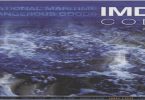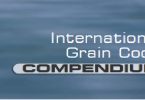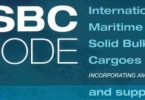Part A
- Name of ship
- Signal letters
- Port of registry
- Gross tonnage
- Date keel laid
- IMO number
- First visit
- Last visit
- No. of visits
Where dates are to be recorded on the checklist state Day, Month and Year.
Part B – Appendix “A & C” Initial/Renewal Survey
- An Initial / Renewal* Survey, for verification of the requirements for the carriage of Solid Bulk Cargoes in accordance with the
Appendix “A & C” of the Code of Safe Practice for Solid Bulk Cargoes, has been satisfactorily completed, and a Certificate of Compliance issued.
Place
Date
Part C – Appendix “B”
We have carried out a BC Code Survey on the above-mentioned ship. The Survey carried out was:
- A complete (Initial / Renewal*) Survey. —–
- A partial (Initial / Renewal*) Survey. Items outstanding for completion are listed overleaf. —-
- A General Examination for: —–
- Extension of validity of BC Code Certificate; —–
- Change of flag; —–
- An additional survey, —–
- Previous BC Code Certificate of Compliance: Full term / Interim* —–
- Issued by Rpt. No refers Issue
- Full term / Interim* BC Code Certificate of Compliance now issued
- Without Conditions With Conditions
- Items shown as outstanding for completion of the survey are listed in the report. —–
- Validity of existing BC Code Certificate of Compliance extended until: —–
- The undersigned has verified that all relevant regulations specified on the checklist have been found to be in agreement therewith or equivalent thereto. All parts surveyed were found to be well maintained in an efficient and good workingcondition and it is recommended that:
- Full term BC Code Certificate of Compliance valid for a period of 5 years be issued.
- A Full term BC Code Certificate of Compliance be issued valid until:
- No Full term BC Code Certificate of Compliance be issued until the survey is completed
Place
Date



